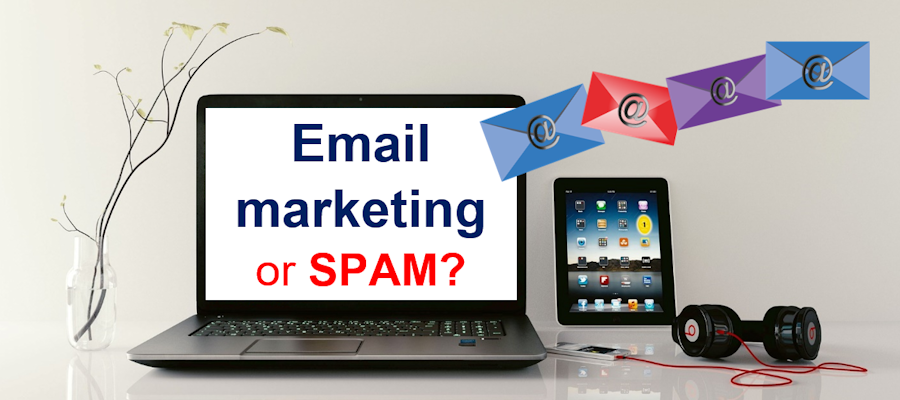People are often worried about running email marketing campaigns – “I don’t want to spam the people on my list” they say. And they’re right – we’ve all been on the receiving end of spam sales pitches from people who we don’t know or may have given us a business card some time ago. So how do you create something that walks that line between blatant sales and relationship building?
Who’s on your list?
The first step is to identify who is in your list and how they got there. There are many ways people get on your list, these are the main routes:
- People you’ve met networking and have given permission for you to send them your newsletter. If they’re happy to get your newsletter, that doesn’t automatically mean they will also be pleased to get your marketing emails.
- People who have given you their contact details in a form on your website for a specific reason. Getting further information about your products or services is part of the deal here.
- People who have already bought something from you online and ticked the box that said ‘I’m happy to receive other information’ or DIDN’T tick the box that said ‘Don’t send me anything else’. They’ve opted in!
- People who have already bought something from you offline. BUT – existing clients don’t appreciate spam either and you should not add them to a list without their permission. They will almost certainly prefer to have a direct 1-2-1 contact with you – and this applies to former clients too.
Each of your lists may need different types of message.
What does each list want?
Networking contacts: will respond best to reading a newsletter that delivers value and useful information. If you want to sell more directly use your newsletter to remind them they can get your free report/tips sheet/how to document and send them to the website to sign up and download it. They’ll then move to your marketing list with different expectations.
People who have completed a web form: are usually more open to marketing messages – BUT if you are too in-their-face may simply unsubscribe. I recommend you develop a friendly, chatty style (it’s more interesting to read) and pitch your message as part of a helpful email, maybe a short tip that relates to your product or service. So – lead with value and then sell.
People who have already bought online: have already shown an interest in your product/services. They may have bought a product, a webinar, a training programme, an e-learning document – but they are clearly hungry for that particular type of information. Make sure your email messages refer to what they’ve already had and present the new item as a follow on that build on the knowledge they already have.
Don’t send email campaigns to existing offline clients – and, if you think former clients might be interested, take the opportunity to give them a call personally. You might be surprised at how many are ready to engage you again or buy more products – they just needed a timely reminder.
Footnote: You are legally obliged to check the email Preference Service to ensure you’re not sending email to anyone who has listed their email. This article is a useful reference regarding what is spam and how to avoid substantial fines if you are investigated.

